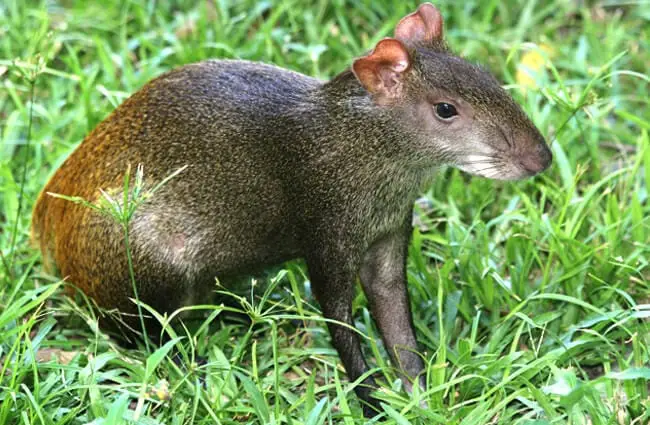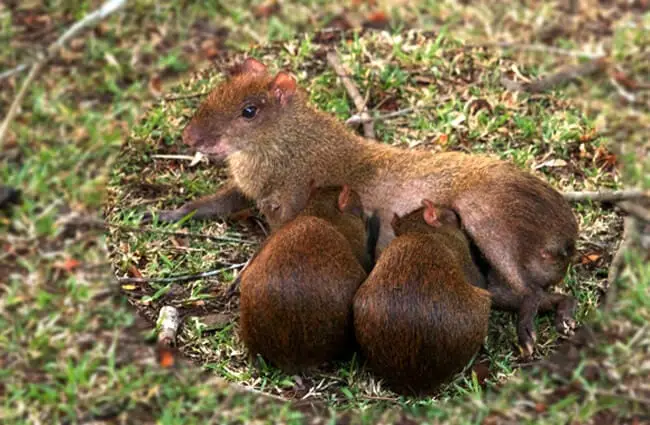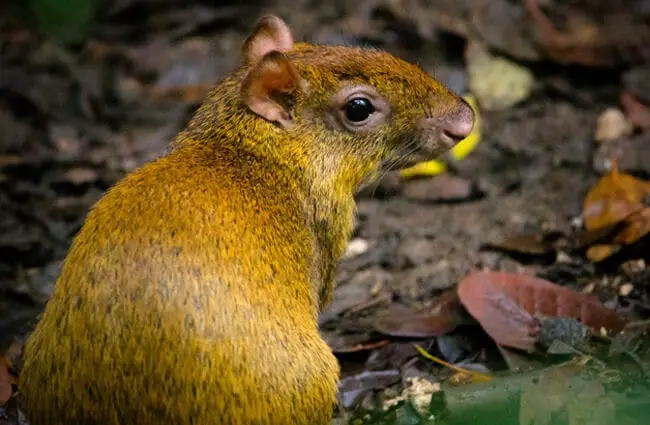Unveiling the Agouti: A Comprehensive Guide
Often described as a rodent bridging the gap between a guinea pig and a rabbit, the agouti is a fascinating creature found in the diverse ecosystems of Central and South America. These shy, seed‑eating mammals play a crucial role in forest health, and their unique behaviors and evolutionary history make them a subject of increasing scientific interest. This guide explores the world of the agouti, covering its natural history, behavior, ecological role, and interactions with humans.

What is an Agouti? Basic Facts
The name “agouti” actually refers to a group of rodents belonging to the family Dasyproctidae. There are several species, including the Central American agouti (Dasyprocta punctata), the Brazilian agouti (Dasyprocta leporina), and the golden rump agouti (Dasyprocta xanthogenys). They are relatively large rodents, typically measuring between 40 and 60 centimeters in length and weighing between 3 and 6 kilograms. Distinguishing features include long legs, a short, almost pig‑like nose, and a sleek coat that varies in color from reddish‑brown to grayish‑black, often with white hairs intermixed. A key characteristic is their preference for a specific type of habitat and their specialized seed handling behavior.
Habitat and Distribution
Agoutis are primarily found in the tropical and subtropical forests of Central and South America, ranging from Mexico to Argentina. They inhabit a variety of forest types, including lowland rainforests, dry forests, and even more disturbed habitats like secondary growth forests and agricultural areas. They prefer areas with dense undergrowth, providing both cover from predators and access to their preferred food sources. Their distribution is closely tied to the availability of suitable forest habitat and the abundance of seeds and fruits. The golden rump agouti, for instance, is mostly found in the Amazon basin, adapting to a slightly different set of environmental conditions than its Central American cousins.

Evolutionary History
The evolutionary history of the agouti traces back to the Eocene epoch, approximately 56 to 34 million years ago. Fossil evidence suggests that early agoutis were smaller and more primitive than their modern counterparts, likely resembling tree‑dwelling rodents. Over millions of years, they underwent significant adaptations to their terrestrial lifestyle, developing longer legs for running, robust claws for digging, and specialized teeth for processing seeds. Their evolutionary success is likely linked to their ability to disperse seeds, which has helped shape the structure and composition of Neotropical forests. Phylogenetic studies suggest that the different agouti species diverged relatively recently, highlighting their adaptability and ability to colonize different environments.
Diet and Foraging Behavior
Agoutis are primarily granivores, meaning their diet consists mainly of seeds. However, they are opportunistic feeders and will also consume fruits, nuts, leaves, roots, and even insects. They have remarkably strong jaws and incisors that continuously grow, enabling them to crack open tough seed shells. They are also known for their unique caching behavior. Agoutis bury seeds in shallow holes throughout their territory, creating a dispersed seed bank. They are surprisingly adept at remembering the locations of these caches, often returning to retrieve them months later. This behavior not only provides them with a food source during times of scarcity but also plays a vital role in seed dispersal and forest regeneration. The selective caching and retrieval further affects the forest composition.

Reproduction and Life Cycle
Agoutis are generally solitary animals, except during the breeding season. They have a relatively long gestation period of around 100 to 150 days, resulting in litters of one to four pups. The pups are born precocial, meaning they are relatively well‑developed and capable of moving around shortly after birth. They are nursed by their mother for several months and gradually learn to forage on their own. Agoutis reach sexual maturity at around one year of age. They have a lifespan of around 6 to 8 years in the wild, but can live longer in captivity. The breeding season varies depending on the species and geographic location, but typically occurs during the rainy season when food is most abundant.

Ecological Role and Interactions
Agoutis are considered keystone species in many Neotropical forests, meaning their activities have a disproportionately large impact on the ecosystem. Their seed caching behavior is crucial for forest regeneration, particularly for large‑seeded tree species. They also contribute to seed dispersal by carrying seeds in their fur and transporting them to new locations. Agoutis are prey for a variety of predators, including jaguars, ocelots, eagles, and snakes. They play a role in nutrient cycling through their foraging and digging activities. Furthermore, they interact with other animals through competition for resources and potential commensal relationships. For example, they sometimes forage alongside peccaries and monkeys, benefiting from increased vigilance against predators.
Agoutis and Humans
Throughout history, agoutis have been hunted by humans for their meat and fur. In some regions, they are considered a delicacy and are still hunted for food. They are also sometimes captured for the pet trade, although this practice is generally discouraged due to their complex needs and limited adaptability to captivity. Habitat loss and fragmentation pose the greatest threat to agouti populations. As forests are cleared for agriculture, logging, and urban development, agoutis lose their habitat and are forced to compete for dwindling resources. Conservation efforts focused on protecting and restoring forest habitats are crucial for ensuring the long‑term survival of these important animals.

Encountering an Agouti in the Wild
If you are lucky enough to encounter an agouti in the wild, it is important to observe it from a distance and avoid disturbing its natural behavior. Agoutis are shy and easily startled, so approaching them too closely can cause them stress. Do not attempt to feed or touch them, as this can disrupt their foraging patterns and make them dependent on humans. If you are hiking in a forest habitat, be aware of your surroundings and keep an eye out for signs of agouti activity, such as footprints, burrows, or cached seeds.
Agouti Care in Captivity
Caring for agoutis in captivity requires a significant commitment and a thorough understanding of their complex needs. They require spacious enclosures with plenty of room to roam and dig. Their diet should consist of a variety of fruits, vegetables, seeds, and nuts, supplemented with a high‑fiber pellet. They also need access to clean water and a suitable substrate for digging and burrowing. Agoutis are social animals and should be housed in pairs or small groups whenever possible. Regular veterinary care is essential to ensure their health and well‑being. It is crucial to provide them with enrichment activities to stimulate their minds and prevent boredom.

Fascinating Agouti Facts
Here are some intriguing details about agoutis:
- Agoutis are excellent swimmers and will often enter the water to cool off or escape predators.
- They have a remarkable ability to remember the locations of their cached seeds, even months after burying them.
- Agoutis play a crucial role in the dispersal of Brazil nut seeds, as they are the only animals capable of opening the hard shells.
- They communicate with each other using a variety of vocalizations, including squeaks, whistles, and clicks.
- Agoutis are crepuscular, meaning they are most active during dawn and dusk.
The agouti, a seemingly unassuming rodent, is a vital component of Neotropical ecosystems. Its unique behaviors and ecological role highlight the importance of biodiversity conservation. By understanding and appreciating these fascinating creatures, we can contribute to their long‑term survival and ensure the health of the forests they call home.

![Red Angus Closeup of a beautiful Red Angus cowPhoto by: U.S. Department of Agriculture [pubic domain]https://creativecommons.org/licenses/by/2.0/](https://animals.net/wp-content/uploads/2020/03/Red-Angus-4-238x178.jpg)




![Red Angus Closeup of a beautiful Red Angus cowPhoto by: U.S. Department of Agriculture [pubic domain]https://creativecommons.org/licenses/by/2.0/](https://animals.net/wp-content/uploads/2020/03/Red-Angus-4-100x75.jpg)

